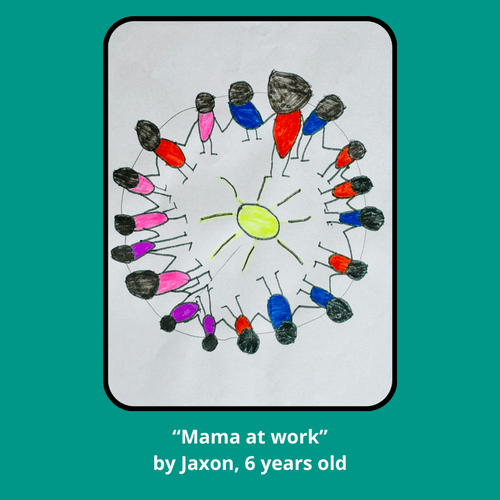Taking the Time: A Guide for Explaining Trauma-Informed Approaches to Kids
Erin Mitchell, Executive Director, Trauma Matters Delaware
POV: Last week, I sat at the dinner table with my wife and two kids. Everyone's plates were just about empty, so I knew this was probably the best time to share the news that I needed to travel for work over the next couple of days. With his last bite of food crammed between the tiny prongs of his fork, my 6-year-old asked, "Mama, what do you do at work?" As someone who has worked from home since before my twins can remember, my kids have never asked about my “work” before. Perhaps they have grown accustomed to me being accessible even when I am working so it just never came up. Thankfully, over the years, they have learned the importance of respecting my work time, even though they still sneak into my office to say hi when I'm on a conference call. Now that they are in kindergarten, working from home is a little more advantageous. For them, it means getting to be car-riders each day. For me, it means flexibility when the school nurse calls and getting to attend most of their school activities.
Now that the twins are a little older, have been to a few of my work events, and understand that the location can vary, the next step is to answer the question of "what"! I'll admit, thinking of how to say my organization assists various entities in gaining knowledge, developing skills, and implementing trauma-informed practices at different levels left me a little unsure of where to start. After pausing for a moment, I crafted a response that will likely be used the next time I need a quick elevator pitch.
"At work, I talk a lot!"
I could have just stopped there, but I know my kid would have followed up with at least 53 more questions, so I continued.
"Actually, I get to talk with community leaders, and share tools and resources that can help them be supportive of the people they work with. An example might be reminding them to use their listening ears." (A point I often make with the twins at this age)
My kid: "So you help people be nice to each other?"
"Something like that."
My kid: "That is a good job for you Mama!"
Of course, trauma-informed care involves much more than that. Simply defined, trauma-informed care involves the understanding of how various experiences can impact someone's feelings and behaviors. If you are looking to start a conversation with your little ones about TIC, here are some tips to help you get started:
1. Start with Feelings: Consider talking to your child about feelings and emotions. Use simple language and examples from their daily life to help them understand different emotions like happiness, sadness, anger, and fear.
2. Introduce the Concept of Feeling Safe: Explain to your child that feeling safe and secure is very important for everyone. You can give examples of things that make them feel safe, like being with you or having a favorite stuffed animal.
3. Explain What Trauma Means: Use age-appropriate language to explain that sometimes, people go through things that make them feel very scared or upset. You can give examples like getting hurt, experiencing a natural disaster, or losing a loved one. Emphasize that trauma is something that can happen to anyone and that it's okay to feel scared or sad about it.
4. Talk About Reactions to Trauma: Help your child understand that when someone goes through a difficult experience, it can affect how they feel and behave. For example, they might feel more jumpy or sad, or they might have trouble sleeping or concentrating.
5. Teach Empathy and Understanding: Encourage your child to be kind and understanding towards others who may have experienced trauma. Let them know that it's important to listen to their friends and family members and offer support when they need it.
6. Emphasize Safety and Support: Reassure your child that there are people who can help if they ever experience something scary or upsetting. Let them know that they can always talk to you or another trusted adult if they have questions or need someone to listen to them.
7. Model Trauma-Informed Behavior: Finally, model trauma-informed approaches in your interactions with your child and others. Show them what it means to be patient, understanding, and supportive, and reinforce the importance of creating a safe and caring environment for everyone.
Explaining trauma-informed approaches is all about fostering empathy, understanding, and a sense of safety. I am hopeful that by starting this conversation with my kiddos now, it will lay the groundwork needed to develop compassion for others and navigate their own emotions in healthy ways!





